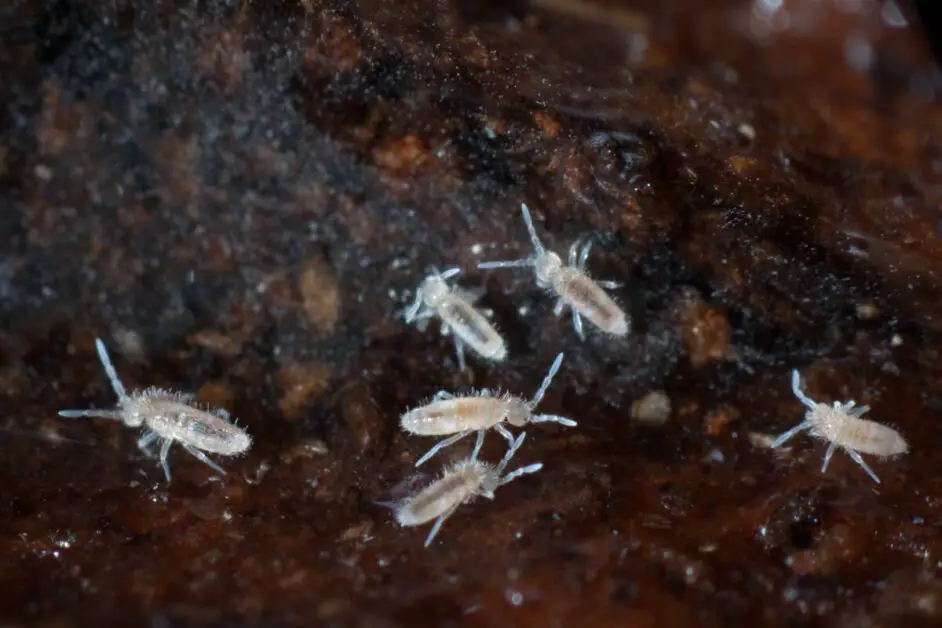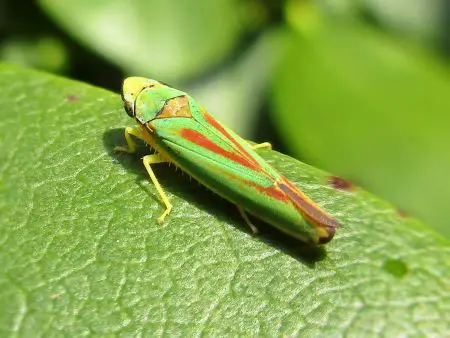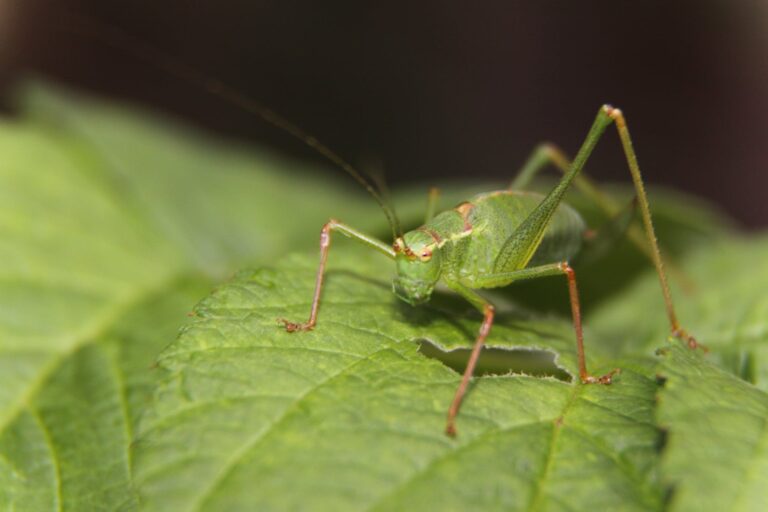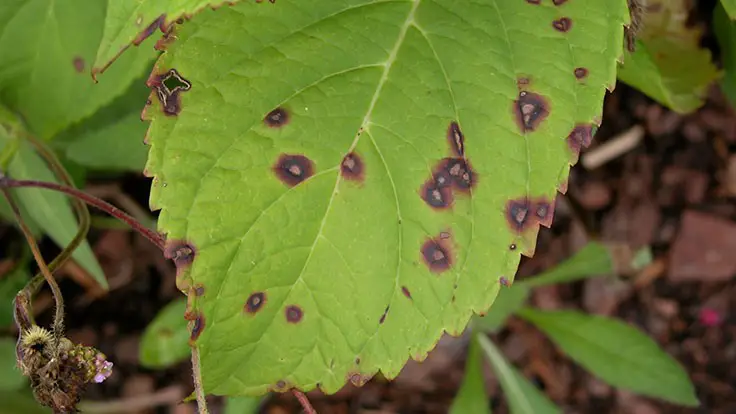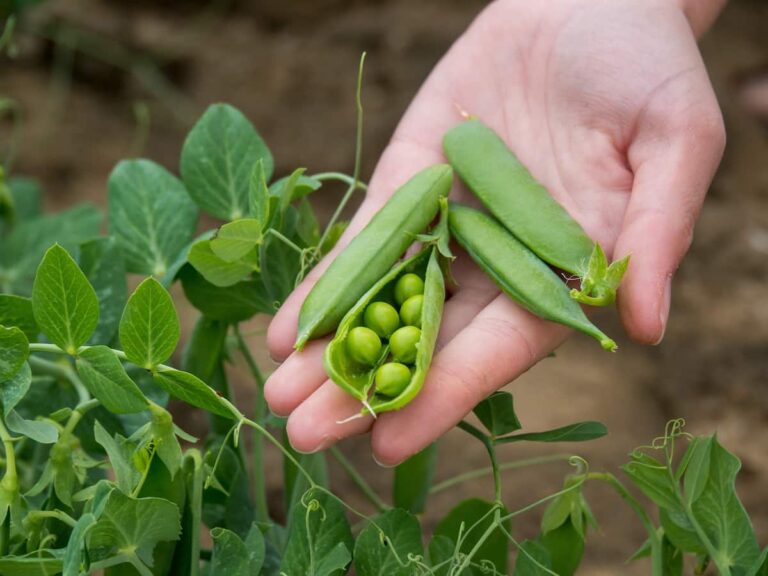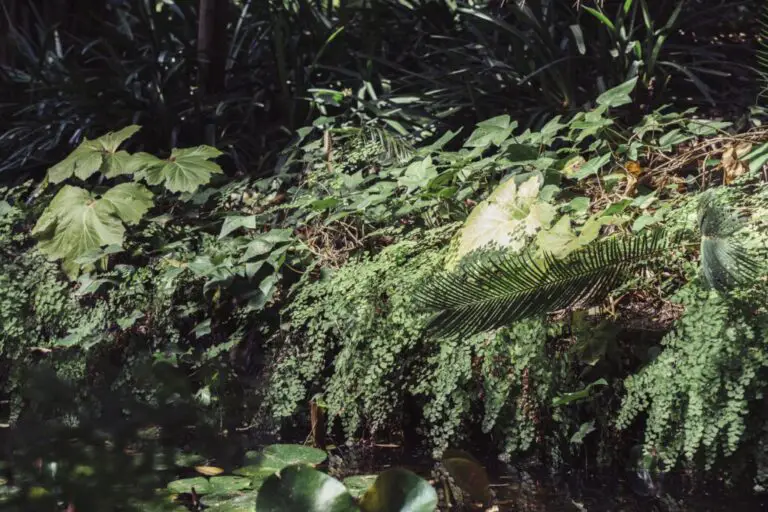How to Get Rid of Springtails in Plants: Tips and Tricks to Eliminate These Tiny Bugs from Your Soil
Are tiny bugs wreaking havoc on your precious plant babies? Fear not! Springtails, those minuscule pests that love to call your soil home, may seem like an unwelcome guest at your green party, but there’s hope. In this guide, we’ll unveil the secrets to bid adieu to these pesky critters. From simple tricks to expert tips, we’ve got you covered on how to evict springtails from your plant haven. With our tried-and-true methods, you’ll soon reclaim your soil sanctuary and ensure your plants thrive pest-free. Say goodbye to unwanted guests and hello to a flourishing garden!
Table of Contents
Identifying Springtails in Your Plants: Understanding the Characteristics of These Tiny Bugs
Springtails are tiny insects that can commonly be found in the soil of potted plants. The name “springtails” comes from their unique ability to jump using a forked appendage on their abdomen. These minuscule bugs measure only about 1-2 millimeters in length and are typically white, gray, or black in color.
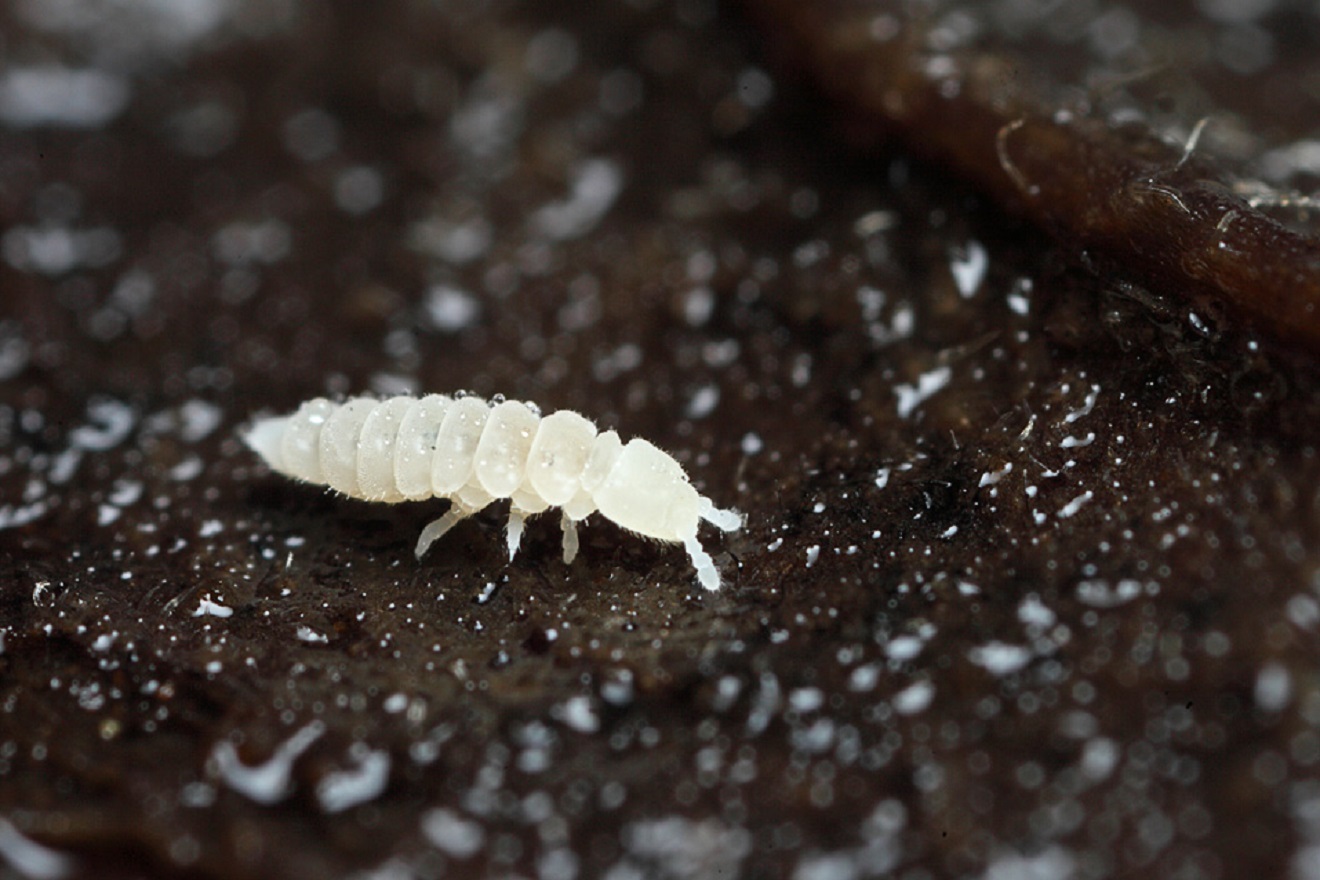
- Distinctive Appearance: Springtails are easily identified by their elongated bodies and six well-adapted legs, which facilitate quick movement through plant roots and soil.
- Fine Hairs: Their bodies are covered in fine hairs, giving them a somewhat fuzzy appearance upon close inspection.
- Unique Defense Mechanism: Springtails can release a cloud of tiny, spring-like appendages called furcula when threatened.
- Escape Strategy: The furcula, situated beneath their abdomen, snaps into place when triggered, allowing springtails to propel themselves several centimeters away from potential predators.
By being familiar with the characteristics of springtails, gardeners and plant enthusiasts can better identify these tiny bugs and take appropriate measures to manage and control their presence. Understanding their unique traits, such as their jumping ability and furcula defense mechanism, can help in distinguishing them from other pests and implementing effective strategies for dealing with them.
Understanding the Impact of Springtails on Plant Health: Recognizing the Damage Caused by These Pests
Springtails may seem inconspicuous due to their small size, measuring only about 1-2 millimeters in length. However, their impact on plant health should not be underestimated. These tiny creatures can cause significant damage to plants, especially when their populations are left unchecked.

- One of the most common ways springtails affect plants is by feeding on the roots and plant tissues.
- This feeding behavior can lead to stunted growth, wilting, and yellowing of leaves. In severe infestations, plants may even die.
- Additionally, springtails can contribute to the spread of plant diseases and fungi, further compromising the health and vigor of plants.
- If you notice any signs of plant damage, such as wilting or discoloration, it is crucial to investigate for the presence of springtails as a potential underlying cause.
Creating an Unfavorable Environment for Springtails: Adjusting Soil Moisture and pH Levels
Adjusting soil moisture and pH levels is crucial in creating an unfavorable environment for springtails. These tiny pests thrive in moist and acidic conditions, so by modifying these factors, we can discourage their presence in our plants.
- Soil Moisture Management:
- Use well-draining pots or add drainage holes to ensure proper water flow.
- Water plants sparingly, allowing the topsoil to dry out slightly between waterings.
- Avoid overwatering and standing water in saucers to maintain a drier environment.
- pH Level Adjustment:
- Springtails prefer acidic environments.
- Conduct a pH test on your soil to determine acidity.
- If pH is too low (acidic), consider adding lime to raise it.
- Aim for a slightly alkaline pH (around 6.5 to 7) to deter springtails.
- Comprehensive Approach:
- While adjusting moisture and pH helps, it may not completely eradicate springtails.
- Combine these measures with other pest control methods for better results.
Remember to monitor your plants regularly and adapt your strategy as needed. Happy gardening! 🌱🪴
Implementing Proper Drainage Techniques: Preventing Excess Moisture in Your Plant Containers
To ensure the health and vitality of your plants, proper drainage techniques are essential for preventing excess moisture in your plant containers. When water accumulates in the soil and lacks an outlet, it can lead to a variety of problems such as root rot, fungal diseases, and the attraction of pests like springtails. By implementing effective drainage strategies, you can create an optimal environment for your plants to thrive.
:max_bytes(150000):strip_icc()/watering-plants-in-containers-847785-08-fd8d784c34854af9829c932703d39e06.jpg)
By implementing these proper drainage techniques, you can effectively prevent excess moisture in your plant containers, mitigating the risk of issues caused by water accumulation. Remember, maintaining a well-drained environment is one of the key factors in nurturing healthy plants and keeping pests at bay.
Removing Excess Organic Matter: Clearing Away Debris That Attracts Springtails
Springtails are attracted to organic matter, such as decaying plant material, that provides them with a source of food and shelter.

By practicing good sanitation practices, you can further enhance the unfavorable conditions for springtails and minimize their presence in your garden.
Utilizing Natural Predators: Introducing Beneficial Insects to Control Springtail Populations
Natural predators can be a valuable asset in controlling springtail populations in your garden or plant containers. Introducing beneficial insects that prey on springtails can help to naturally regulate their numbers and prevent infestations. These predators include ground beetles, rove beetles, predatory mites, and nematodes.

- Introduction of Beneficial Insects:
- Introduce beneficial insects (natural predators) into the soil or growing media.
- These predators seek out and feed on springtails, reducing their population.
- Provides long-term control without relying on chemicals.
- Choosing the Right Predators:
- Select predators specific to the type of springtail infestation.
- Consult with pest control experts or suppliers specializing in biological pest control.
- Identify the most effective predator for your situation.
- Sustainable and Environmentally-Friendly Approach:
- Incorporating natural predators is eco-friendly.
- Reduces reliance on chemical pesticides.
By harnessing the power of nature’s pest controllers, you can create a balanced ecosystem in your garden that helps to keep springtail populations in check and promote healthy plant growth.
Applying Natural Repellents: Using Essential Oils and Other Natural Substances to Deter Springtails
Applying natural repellents can be an effective strategy to deter springtails from infesting your plants. Essential oils, such as peppermint, neem, and tea tree oil, have shown promise in repelling these tiny bugs.

- Essential Oils: Dilute a few drops of essential oil in water and spray it directly onto affected plants. The strong scents of essential oils, disliked by springtails, make them less likely to colonize your plants.
- Diatomaceous Earth: Sprinkle diatomaceous earth around the base of your plants. The sharp particles penetrate the springtails’ exoskeleton, causing dehydration and death.
- Natural Repellents: Substances like cinnamon, garlic, and cayenne pepper can create a repellent barrier against springtails. These natural deterrents may require regular reapplication, especially after rain or watering, to remain effective.
Using Chemical Insecticides as a Last Resort: Understanding the Risks and Benefits
Using chemical insecticides should always be considered as a last resort when dealing with springtail infestations in your plants. While insecticides can be effective in eliminating springtails, they also come with potential risks and drawbacks that should be carefully considered.

- Environmental Impact:
- Chemical insecticides can harm not only springtails but also beneficial insects and pollinators.
- The surrounding ecosystem may be affected by these chemicals.
- Non-Selective Nature:
- Chemical insecticides are not always specific to springtails.
- They can harm other organisms in the garden, such as earthworms, bees, and birds.
- Residues and Safety:
- Residues from insecticides can remain on plants.
- Consider safety, especially if you consume edible crops.
Therefore, it is important to carefully consider the risks and benefits of using chemical insecticides and explore other alternatives before resorting to their use in your garden.
Understanding the Life Cycle of Springtails: Disrupting Reproduction and Growth Stages
Springtails undergo a unique life cycle that consists of three main stages: egg, nymph, and adult. Understanding this life cycle is crucial in effectively disrupting their reproduction and growth stages.
- Life Cycle Stages:
- Egg Stage:
- Springtails lay tiny, oval-shaped eggs in damp soil or organic matter.
- Eggs hatch within a few days to several weeks, depending on environmental conditions.
- Nymph Stage:
- Young springtails (nymphs) emerge from the eggs.
- Nymphs resemble adults but are smaller and lack wings.
- They molt several times, shedding exoskeletons as they grow.
- Nymphs actively feed on decaying plant matter, fungi, and microorganisms in the soil.
- Adult Stage:
- Adult springtails have six legs, two pairs of antennae, and vary in color (white to gray or black).
- They possess a spring-like appendage (furcula) on the abdomen.
- The furcula allows them to jump several centimeters when disturbed.
- Adult springtails continue feeding on organic matter and contribute to soil aeration.
- Egg Stage:
- Disrupting Their Life Cycle:
- Target damp and organic environments where springtails thrive.
- Implement measures to reduce moisture and create less favorable conditions.
- Consider natural predators or other control methods to manage springtail populations.
In the following sections, we will explore specific strategies and techniques to create an unfavorable environment for springtails, prevent excess moisture, and reduce their attraction to debris. Employing these methods will aid in keeping springtail populations in check and maintaining the health of your plants.
Employing Physical Barriers: Preventing Springtails from Accessing Plant Roots
Physical barriers are an effective method to prevent springtails from accessing plant roots and causing damage. By implementing these barriers, you can create a protective boundary that restricts the movement of these tiny bugs.
- One approach is to use materials such as copper tape or mesh to encircle the base of the plant, creating a barrier that springtails find difficult to traverse.
- Another option is to incorporate physical barriers into the soil itself.
- This can be achieved by placing a layer of horticultural fabric or agricultural netting beneath the topsoil.
- This prevents springtails from burrowing into the root zone while still allowing for proper drainage and airflow.
- By employing these physical barriers, you can effectively impede the movement of springtails and safeguard the health of your plants.
Practicing Proper Sanitation: Regularly Cleaning and Disinfecting Plant Containers
Regular cleaning and disinfecting are essential practices for maintaining healthy plant containers. By implementing proper sanitation measures, you can minimize the risk of pest infestations and promote optimal plant growth.

- Debris Removal:
- Clear fallen leaves, dead plant material, and remnants from containers.
- These materials attract pests like springtails.
- Eliminate potential breeding grounds.
- Thorough Cleaning:
- Use mild detergent or disinfectant solution to clean containers.
- Scrub inside and out, paying attention to corners and crevices.
- Rinse thoroughly to remove any soap or disinfectant residues.
- Regular Sanitation:
- Incorporate routine cleaning into maintenance.
- Clean and disinfect containers during repotting or seasonal transitions.
By practicing proper sanitation, you are taking proactive steps to create a clean and pest-free environment for your plants.
Monitoring and Inspecting Your Plants: Detecting Springtail Infestations Early
Inspecting and monitoring your plants regularly is crucial in detecting springtail infestations early. These tiny bugs can be difficult to spot with the naked eye, but careful observation can help identify their presence.
Monitoring and Inspecting Your Plants: Detecting Springtail Infestations Early
| Monitoring Method | Description | Frequency |
|---|---|---|
| 1. Visual Inspection | – Overview: Regularly inspect plant leaves, soil, and surrounding areas for any signs of springtails. | – Weekly: Conduct thorough visual checks. |
| – Indicators: Look for tiny jumping insects, especially in moist areas, around the base of plants, and on the soil surface. | – After Watering: Check areas post-watering. | |
| – Leaf Damage: Examine foliage for feeding damage or stippling caused by springtails. | ||
| 2. Sticky Traps | – Placement: Set up yellow sticky traps near plant bases or areas with suspected springtail activity. | – Bi-weekly: Monitor traps regularly. |
| – Attractant: Optionally, use a lure like a piece of moist bread to attract springtails to the traps. | – Move Traps: Adjust trap placement based on observations. | |
| – Quantity: Place traps in multiple locations for comprehensive coverage. | ||
| 3. Soil Moisture Checks | – Probing Moisture Levels: Use a moisture meter to assess soil moisture. Springtails thrive in damp conditions. | – Regularly: Check moisture levels during watering. |
| – Optimal Moisture: Maintain a balance; avoid excessive dampness to discourage springtail infestations. | ||
| 4. Soil Surface Examination | – Digging Observation: Gently dig into the soil surface to observe springtails in their habitat. | – Monthly: Perform soil examinations. |
| – Depth: Inspect the top few inches of soil where springtails typically reside. | ||
| 5. Behavior Observation | – Jumping Activity: Watch for characteristic jumping behavior of springtails when the soil is disturbed. | – As Needed: Observe plant and soil behavior. |
| – Reaction to Disturbance: Tap the soil gently to see if springtails become active and jump. | ||
| 6. Plant Health Monitoring | – Foliage Condition: Regularly assess the overall health of your plants, as springtails can affect plant vitality. | – Bi-weekly: Check for any signs of stress or decline. |
| – Stunted Growth: Look for stunted growth or yellowing leaves, which may indicate a potential issue. |
Note: Early detection is crucial for effective springtail control. Combining multiple monitoring methods provides a comprehensive approach to identify and address springtail infestations promptly. Adjust monitoring frequency based on plant health, environmental conditions, and previous observations.
Seeking Professional Help: When and How to Hire a Pest Control Expert for Springtail Infestations
When dealing with a severe springtail infestation in your plants, it may be necessary to seek professional help from a pest control expert. These professionals have the knowledge and experience to effectively identify and treat springtail infestations, ensuring the long-term health of your plants.
- Expertise and Experience: Look for pest control experts with specialized knowledge and experience in dealing with springtails. They should have a proven track record in effectively managing springtail infestations and be trained in pest management techniques tailored to these specific pests.
- Environmentally-Friendly Practices: Prioritize hiring experts who follow environmentally-friendly and sustainable pest control practices. Chemical insecticides should be used sparingly and as a last resort to minimize harm to beneficial insects and the ecosystem. Seek professionals who prioritize natural and organic pest control methods to maintain ecological balance while effectively eliminating springtail infestations.
- Research and Recommendations: Consult reputable local gardening associations, read online reviews, and seek recommendations from other gardeners to find a dependable and effective pest control expert. Gathering insights from trusted sources can help ensure you hire a professional who is proficient in addressing springtail infestations while prioritizing environmental sustainability.
Watch video for more information:
FAQ
What are springtails?
Springtails are tiny bugs that belong to the class of hexapods, known as Collembola. They are characterized by their ability to jump using a forked appendage called a furcula.
Can springtails harm my plants?
Springtails generally do not cause significant damage to plants. They primarily feed on decaying organic matter and fungi. However, in large numbers, they can become a nuisance and may indirectly affect plant health by competing for nutrients.
How can I create an unfavorable environment for springtails?
Adjusting soil moisture and pH levels can help deter springtails. They prefer moist environments, so allowing the soil to dry out slightly and maintaining proper drainage can discourage their presence.
Are there any natural predators that can help control springtail populations?
Yes, introducing beneficial insects such as predatory mites, nematodes, or rove beetles can help control springtail populations. These predators feed on springtails and help keep their numbers in check.
Can I use natural repellents to deter springtails?
Yes, using essential oils like neem oil or other natural substances with repellent properties can discourage springtails. However, their effectiveness may vary, and it’s important to follow proper application methods.
When should I consider using chemical insecticides for springtails?
Chemical insecticides should be considered as a last resort when other methods have failed to control springtail infestations. It’s important to understand the risks and benefits associated with the use of such products.
How can I prevent springtails from accessing plant roots?
Employing physical barriers, such as a layer of fine mesh or gravel, can help prevent springtails from reaching plant roots. This will create a barrier that they cannot easily pass through.
How often should I clean and disinfect my plant containers?
It is recommended to regularly clean and disinfect your plant containers to maintain proper sanitation. Aim for a thorough cleaning at least once a month, or more frequently if you notice any signs of springtail infestations.
How can I detect springtail infestations early?
Regular monitoring and inspecting of your plants is crucial for detecting springtail infestations early. Look out for signs like the presence of springtails, damage to plant foliage, or unusual soil moisture levels.
When should I consider seeking professional help for springtail infestations?
If your efforts to control springtails have been ineffective or if the infestation is severe, it may be time to seek the assistance of a pest control expert. They have the expertise and resources to effectively manage the situation.

Studied Agricultural Engineering-Plant Protection at University of California, Davis.
Head of Content writing team at Southelmontehydroponics.com

